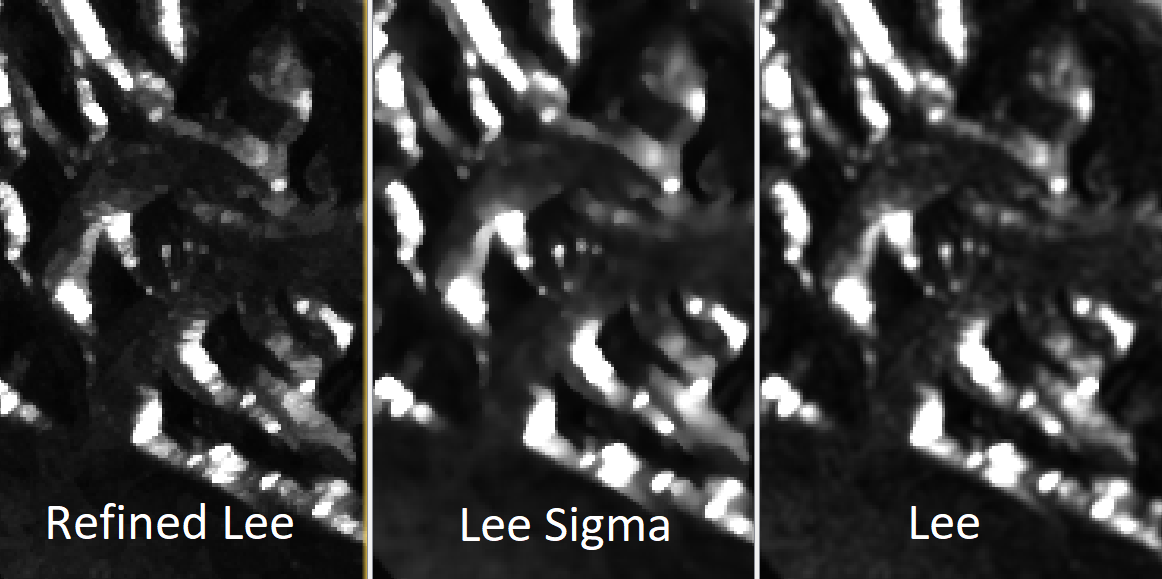I’m working on an ENVISAT WSM data which have to be filtered. During my tests I applied both Lee Sigma and Refined Lee filters (from Speckle Filtering → Single Product Speckle Filter).
Thanks to @jun_lu, I’ve found the appropriate references to the filters:
Lee et al. (2009) publication (an introduction of Improved Lee Sigma filter, in SNAP /and in this post/ Lee Sigma), presents a comparison of several filters, including Refined Lee and Lee Sigma. The comparison shows, that - in case of those two filters - the results are not so much different (Lee Sigma is slightly better). Both preserves edges, Lee Sigma resolves problem of blurreness, among others.
I applied:
- Refined Lee
- Lee Sigma (no. of looks: 1, window size: 5x5, sigma:0.5, target window size: 3x3)
- Lee (thus, not Improved Lee filter, filter size: 3x3)
and others variations of the Lee/LeeSigma filters, which, for clarity of this post I’ll not mention. Despite of different parameters for the Lee Sigma, the result was similar or “worse” than presented here.
Surprisingly, LeeSigma caused the strongest “blurriness” of the SAR image. Based on Lee et al. (2009), this should not be the case. The Improved Lee Sigma filter should preserve edges and mitigate the problem of blurring which was the thing of Lee filter.
Therefore, my question is: Is the Lee Sigma really the Improved Lee Sigma speckle filter (Lee et al. 2009)?
The results of my tests:
Just in case, reference to Lee et al. (2009):
Jong-Sen Lee, Jen-Hung Wen, T. L. Ainsworth, Kun-Shan Chen and A. J. Chen, “Improved Sigma Filter for Speckle Filtering of SAR Imagery,” in IEEE Transactions on Geoscience and Remote Sensing, vol. 47, no. 1, pp. 202-213, Jan. 2009, doi: 10.1109/TGRS.2008.2002881.

